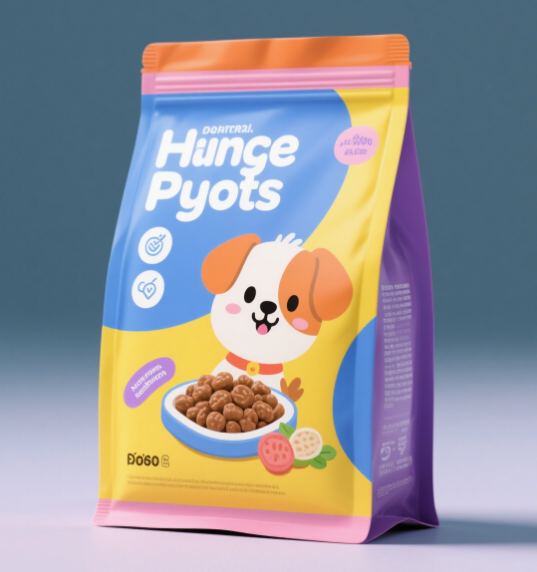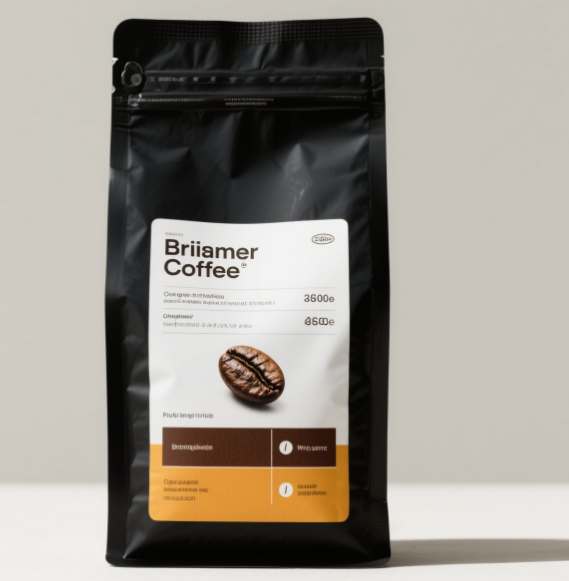שקיות אריזה עם תחתית שטוחה: שיפור אסתטיקה ופונקציונליות
בעולם האריזה, שקיות אריזה עם תחתית שטוחה בולטות כסינטזה חכמה בין צורה לתפקוד. השקיות האלה, עם בסיס יציב ועיצוב גמיש, עושות יותר מאשר רק שומרות על המוצרים – הן עושות אותם מושכים יותר על המדף וקלים יותר לשימוש ביומיום. בין אם מדובר בסנאק, קוסמטיקה או ציוד חשמלי, שקיות אריזה עם תחתית שטוחה משפרות גם את המראה (אסתטיקה) וגם את הביצועים (פונקציונליות). בואו נגלה כיצד הן משיגות את האיזון הזה ולמה הן הבחירה המועדפת של מותגים וצרכנים.
1. אסתטיקה: הופכת מוצרים לנגשים
הấnכתיים חשובים, ושקיות אריזה עם תחתית שטוחה נועדו למשוך את תשומת הלב. המבנה הייחודי והמאפיינים הניתנים להתאמה הופכים את המוצרים למושכים ומקצועיִים יותר:
- תצוגה אנכית : בשונה משקיות פלסטיק רופסות או כיסים רופפים, שקיות אריזה עם תחתית שטוחה עומדות זקופות על המרצפות. זה גורם להן להיות נראות ממרחק, ומבטיח שהמוצר שלך לא יאבד מאחורי אחרים. לדוגמה, שקית קפה איכותי בעיצוב תחתית שטוחה תעמוד בגובה העיניים מול מתחרים, ותמשוך את תשומת הלב של הקונים.
- מראה חלק ונקי : התחתית השטוחה והצדדים חלקים יוצרים משטח מסודר ליצירת המותג. לוגואים, צבעים ועיצובים נראים חדים יותר על משטח שטוח בהשוואה לאריזות מקומטות או בלתי סדירות. לדוגמה, מותג לטיפוח העור יכול להדפיס לוגו מינימליסטי על שקית עם תחתית שטוחה עם מראה מקשה כדי להעניק תחושת מותרה.
- אפשרויות התאמה אישית : מותגים יכולים להתאים שקיות אריזה עם תחתית שטוחה כדי להתאים לסגנון שלהם. הוסיפו חלונות שקופים כדי להציג את המוצר (כגון סוכריות צבעוניות או פסטה אומנותית), השתמשו בדפוסי דיו מתכתית כדי להעניק תחושת איכות גבוהה, או בחרו בחומרים ידידותיים לסביבה (כמו נייר קרפט) כדי להשיג מראה טבעי. פרטים אלו הופכים את השקית ליחידה ומע deliberate.
- עימוד מותג עקבי : המשטח השטוח מבטיח שהדפוסים המודפסים יתאימו באופן מושלם, וימנעו לוגואים מעוותים או נמתחים שעלולים להופיע על גבי אריזות מעוקלים. עקביות זו תורמת לזיהוי המותג - הצרכנים יקשרו את המראה הנקי והעומד עם המוצר שלך.
2. פונקציונליות: יתרונות מעשיים למותגים ולמשתמשים
: למרות שהמראה חשוב, שקיות אריזה עם תחתית שטוחה מצטיינות גם בשימוש היומיומי. העיצוב שלהן פותר בעיות אריזה נפוצות, ופועלת לרווחה של העסקים והצרכנים כאחד
- קל למלא ולחתום : הפתח הרחב והבסיס היציב הופכים את מליית שקיות אריזה עם תחתית שטוחה לפשוטה, בין אם היא מתבצעת ידנית ובין אם היא מתבצעת מכאנית. הדבר הזה מזרז את שורות האריזה במכרות. בנוסף, הן נסגרות באופן בטוח באמצעות רוכסנים, סגילה חמה או מדבקות, ומשמרות את התכולה טרייה (כמו חטיפים או תבלינים) ומונעות נשפכים.
- הצלה של מקום אחסון : בבית או בחנויות, השקיות האלה מונחות זו על זו בצורה מסודרת. התחתית השטוחה מונעת מהן להיתפס, כך שהرفים במלאי הבית או בערכות תערוכת החנות נשארים מסודרים. לקוח שיש לו ארון מלא בשקיות אריזה עם תחתית שטוחה יעריך עד כמה הן מתאימות למלאי ללא בזבוז מקום.
- ניתנות לשימוש חוזר ומעיקבות : לרוב שקיות האריזה עם תחתית שטוחה יש רוכסנים שניתנים לסגירה חוזרת, מה שמאפשר ללקוחות לפתוח ולסגור אותן מספר פעמים. כך נשמרת הקראקמלות של המאכל, טריות הקפה או יבשות חומרי היצירה. לדוגמה, שקית עם מאכל קלוי לדרך שברוכה ברוכסן – נוחה בהרבה משקית חד-פעמי שאין בה צורך להשתמש בפליזרים או בגומי – אין צורך בקישוטים או בגומי.
- עמידה בשיפוץ : בין אם משליחים מוצרים או נושאים אותם הביתה, שקיות אריזה עם תחתית שטוחה נשאראות טוב. החיתולים המותזקים והחומר החזק (כמו פלסטיק עבה או נייר) עמידים בקריעה, גם עם פריטים כבדים. לדוגמה, מותג של ציוד בניין יכול להשתמש בקופסאותเหล่านี้ להאריזת סורגים או מסמרים, מבלי לחשוש מקריעות במהלך המשלוח
3. יישומים מגוונים של חומרים ושימושים
שקיות אריזה עם תחתית שטוחה עובדות עם מגוון חומרים, מה שעושה אותן להתאמה למוצרים וערכי מותג שונים:
- נייר : ידידותיות לסביבה וניתנות להחזרה, שקיות נייר עם תחתית שטוחה הן מצוינות למוצרים יבשים כמו ngũות, תה, או מאפים. לרוב הן מוקפות בשכבת פלסטיק דקה שמונעת מהرחקת הלחות, ומשלבת ניידות עם פונקציונליות.
- פְלַסְטִיק : גרסאות שקופות או צבעוניות של פלסטיק הן אידיאליות למוצרים שבהם חשובה ראייה, כמו סוכריות, אגוזים, או קוסמטיקה. הן עמידות במים וחזקות, מה שעושה אותן טובות למוצרים לשימוש במקלחת (פסי שמן) או לממתקים באוויר הפתוח.
- חומר תמציתי :למרكات המרכזות על ידידותיות לסביבה, שקיות אריזה עם תחתית שטוחה, שמיוצרות מפלסטיק על בסיס צמחי או חומרים על בסיס פטריות, נמסות באופן טבעי ופוחתות את הנזק לסביבה. הן מתאימות למשתמש בודד, למשל לאריזות מזון להליכה או אריזות דגימה
גמישות זו אומרת שבערך כל מוצר - ממתוקים עד כלים קטנים - יכול להינות מעיצוב עם תחתית שטוחה.

4. משתלם מבחינת עלויות לעסקים
למרות המראה המפואר שלהן, שקיות אריזה עם תחתית שטוחה הן לעיתים קרובות בחירה משתלמת מבחינת עלויות למותגים:
- הפחתת פסולת חומרית עיצוב יעיל משתמש בדיוק בכמות החומר הדרושה כדי להחזיק את המוצר, תוך previa על שימוש מוגזם בחומרי אריזה (כגון תיבות נפוחות). הדבר מפחית את עלויות החומר לאורך זמן.
- דמי משלוח נמוכים יותר בעת אריזה למשלוח, השקיות תופסות פחות מקום בהשוואה לתיבות קשיחות, מה שמפחית את מספר המשלוחים הנדרשים. הדבר חוסך לעסקים בעלויות תחבורה.
- ערך תפיסה גבוה יותר : לקוחות עשויות להיות מוכנות לשלם קצת יותר עבור מוצר בתוך שקית אירובית ופונקציונלית, מה שמעלים את רווחיות. איכות השקית מציינת שהמוצר שבפנים שווה את ההשקעה.
שאלות נפוצות
האם שקיות תיבה טובות יותר מארגזים?
עבור רבים מהמוצרים, כן. הן קלות יותר, תופסות פחות מקום, וغالבًا זולות יותר מהשוואה לארגזים. ארגזים טובים יותר למוצרים שבירים במיוחד, אך שקיות תיבה מתאימות למגוון רחב של מוצרי יבש, חטיפים או פריטים קטנים.
האם ניתן להשתמש בשקיות תיבה להאריזת נוזלים?
חלק מהשקיות כן, אך הן מתאימות בעיקר למוצרים יבשים או חצי מוצקים (גרנולה, ג'לים). גרסאות עם بطנה פלסטית מתאימות לרוטבים או שמנות, אך יש לוודא שיש להן סגירה אטומה למניעת דליפות.
איך שקיות התיבה עוזרות ביצירת המונפשות?
המשטח השטוח וה אחיד מאפשר הדפסת לוגואים ועיצוב מקצועי. תצוגה אנכית מושכת את תשומת הלב של הלקוחות, והאפשרות להתאים את החומרים מאפשרת להתאים את האריזה לערכים של המותג (אריזה ידידותית לסביבה, מפונקת, ועוד).
האם לקוחות מעדיפים שקיות אריזה עם תחתית שטוחה על פני סוגים אחרים?
רבים כן. סקרים מראים שצרכנים אוהבים את העובדה שהן עומדות זקופות, נסגרות בקלות ומרשימות מבחינה ויזואלית. יש סיכוי רב יותר שיבחרו מוצר שנראה קל לשימוש ומרשים מבחינה ויזואלית.
האם שקיות אריזה עם תחתית שטוחה הן ידידותיות לסביבה?
כן יכולות להיות. בחירת חומרים כמו נייר מחזור, פלסטיק שניתן לפרק בקומפוסט או בגדים ביו-דgradable הופכת אותן לארוכות חיים. יש לחפש תעודות כמו "ניתן לפרק בקומפוסט" או "ניתן להחזרה" על מנת לאשר זאת.
באילו גדלים מגיעות שקיות אריזה עם תחתית שטוחה?
הן מגיעות בגדלים שונים, מהקטן ביותר (בגודל כיס, לדוגמה לקנדימן או דוגמאות) ועד הגדול ביותר (שיכול להכיל יותר מ-5 ק"ג של אורז או אוכל לחיות מחמד). מותגים יכולים להזמין גדלים מותאמים אישית כדי להתאים בדיוק את המוצר.




